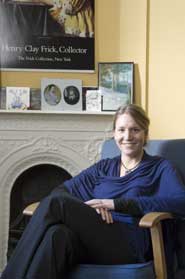“Letters, doctors’ case notes, and personal diaries attest to the fact that a large number of men and women believed themselves to be suffering physically from the effects of excessive erotic passion,” says Dr Dawson.
“Like other illnesses, love is represented as an infectious malady; it is caught through the eyes and it triggers an immediate physical reaction: the liver malfunctions, the blood becomes corrupt, and the body deteriorates.”
Many of the clichés we use to describe love today such as ‘burning with passion’ or ‘dying of a broken heart’ are given a physiological basis in early modern medicine, which suggests that love actually did raise body temperature and put excessive strain on the heart. Anatomists report seeing hearts literally burned or otherwise physically damaged in the dissected bodies of those who had supposedly died for love.
Doctors also believed that lovesickness could be cured by pharmaceutical, surgical, dietary or psychological means.
“Often a number of different methods were used,” Dr Dawson explains. “Bloodletting, enemas, emetics, change of diet and an examination of the individual’s astrological chart could be combined with psychological advice when treating a patient.
“Lovesick individuals were encouraged to keep busy, to exercise, and to confess their passion to a friend. Music was held to have beneficial effects, inducing harmony in the mind and travel was thought to expel the harmful vapours that intensified the disease and to provide a distraction for the lover’s troubled imagination.
“However, the best cure for lovesickness was thought to be sex. According to early modern writers, sex expelled the lover’s excess blood and seed, which accumulated in the body and putrefied, releasing harmful vapours that could cause melancholy.”
In her book Lovesickness and Gender in Early Modern English Literature, Dr Dawson examines a number of historical accounts of lovesickness and considers literary representations of the condition in the works of Shakespeare and his contemporaries.
She also raises wider questions about gender and identity, exploring the relationship between women's lovesickness and other female maladies (such as hysteria and greensickness) and analysing how anxieties concerning love's ability to emasculate the male lover emerge indirectly in remedies for lovesickness.
Lovesickness and Gender in Early Modern English Literature by Lesel Dawson is published by Oxford University Press, price £50, ISBN-13: 978-0-19-926612-8
